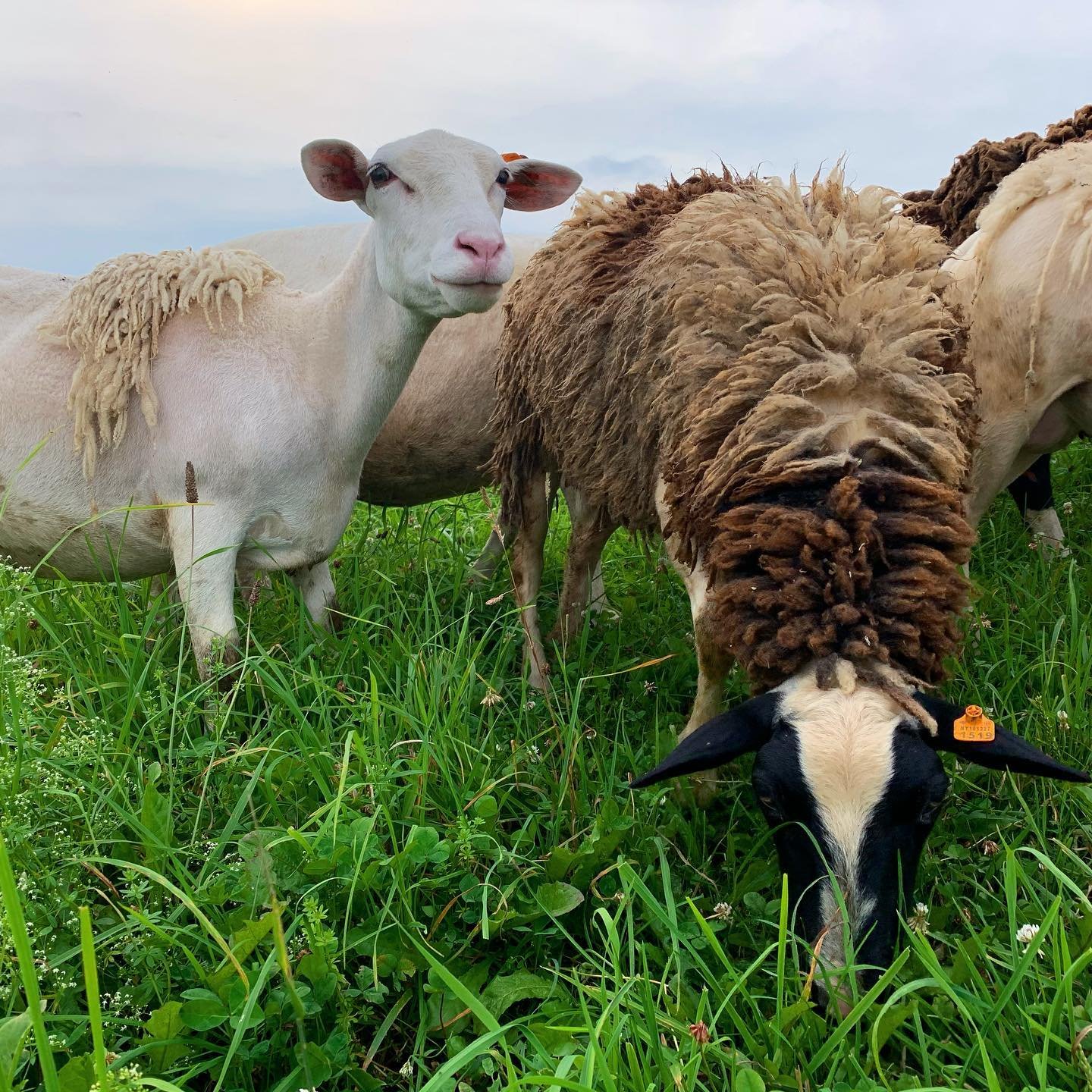We recently sold a group of ewe (female) lambs to a fellow farmer in Norwich, who will be using them as breeding stock. It’s a nice feeling selling young stock that will go on to have long, productive lives elsewhere. But it is a practice that is a little outside of my comfort zone. I take that back…it is VERY MUCH outside of my comfort zone!
You see, we usually don’t sell our sheep and goats for breeding. We usually sell them to intermediary buyers who then sell them direct to consumers for consumption (meat). We have good, long-standing relationships with these buyers. This is a market I know inside and out; these are buyers I understand. We’ve spent years perfecting (although nothing is ever perfect!) our system to give us just the right age, size, and quality these buyers expect. I’m comfortable with my ability to raise beautiful animals just for this purpose, and I am proud of the job we do. Our customers seem very happy, too.
For our usual market, lambs and goats born in November and December are ready to be sold starting in March. At three to four months of age, they are generally 50-60+ pounds. Everything about our system—from the barn and bed pack to the feeding, watering, and handling systems—is set up to support this production timeline. When animals reach their ideal weight for market, off they go! This fairly quick turnover allows space for the next crop of new babies because we are set up to funnel animals to our intermediary buyers virtually year-round.
But when I was approached with the opportunity to sell ewe lambs for breeding, I didn’t think about any of these details. I simply thought how nice it would be to send animals off to a new home and potentially long life rather than become someone’s dinner. I guess I am an old softie after all!
This buyer had one special request: Can we hold onto the lambs until early May, when the grasses are up and they can save on hay costs? Why, sure! I love my lambs and want to ensure they are in the best of health for their new owners; holding onto them for nearly three more months wouldn’t be a problem at all! We had settled on a price already slightly above my usual market price, so I was happy. Again, I wasn’t thinking about any of the details.
The lambs indeed flourished and continued to grow, some of them exceeding 100 pounds. In the last weeks of April and into May, we put the animals out to graze on pasture. They loved this of course, and in the process, got a little more wild and wary. So, when it came time for me to gather the lucky ewe lambs meant to travel to a new home and live long and happy lives, it was virtually impossible for me to catch them. Our usual, very casual handling system was unworkable with these larger, skittish lambs.
Most folks are unaware that lambs and sheep are incredibly fast and amazing jumpers. You’d absolutely never expect it from such fat, floofy puff balls. But as prey animals that see everything (and I mean everything!) as a predator, their single most effective survival tactic is flight. They will run, bowl you over in a panic, or simply leap above your head to escape danger. Farmers and animals alike can get hurt if you’re not set up with the proper handling equipment. I spent the better part of my Mother’s Day rounding up and placing the fastest, strongest, floofy-est lambs into pens. By the end I was bruised, battered, smelly, and exhausted…and completely regretting their sale price, which now seemed a pittance for the work required.
The lambs all arrived at their new home and I hear they are doing well. I’m still happy that they’ve gone on to settle into a new life where they’ll one day be bred and have lambs of their own. Or, at least, I hope they will. Again, my experience and expertise (if you want to call it that) is raising a specific size animal for meat. I will carefully choose replacements to keep on the farm from time to time, but my expertise is not in raising breeding stock. Over the next few months—and maybe even years—I’ll fret over whether my lambs are performing as expected. Will I one day get an angry call from the farmer because he is unhappy with my lambs? And if I do, how can we determine whether the issue is my fault or his? There was never any guarantee of performance as part of the sale, but I will worry anyway.
Turns out, it’s a little easier selling animals for meat.
